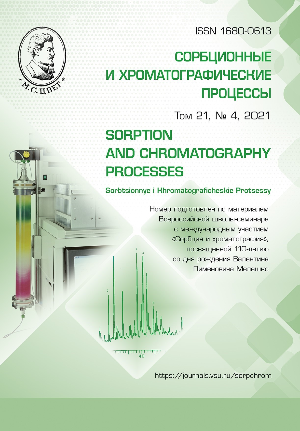Selectivity of the “Anti-IgE-Hemo” hemosorbent for the removal of various immunoglobulins from human plasma
Abstract
Plasmapheresis is one of the most common procedures used to regulate the activity of humoral immunity and the concentration of reactive antibodies. However, there is a plasma-saving alternative, specific hemosorption. This method involves using sorbents with ligands to only extract a certain type of molecule, for example, immunoglobulins, from the blood. Belarus produces specific hemosorbents domestically. The article is devoted to the study of the sorbent with a ligand in a form of an aromatic amino acid, tryptophan, which can interact with the Fc-fragment of immunoglobulins G. The subject of the study was the analysis of changes in the concentration of total immunoglobulins G, A, and M and their subclasses IgG-1, IgG-2, IgG-3, and IgG-4 after contact with a hemosorbent. Bench experiments were carried out, in which the geometry and conditions of extracorporeal hemosorption in patients were simulated: duration, temperature, sterility, and the conditions of the blood flow (movement) using a peristaltic pump, stand, and containers for sampling and draining biomaterial. The results of the experiment showed that after the blood plasma flows through the hemosorbent, the concentration of albumin and globulin decreases. The obtained results indicate the high efficiency of the investigated hemosorbent in relation to all major immunoglobulin classes. The calculated sorption efficiency was 44.89 (37.24; 46.27)% for IgG, 31.83 (31.73; 39.74)% for IgM, 22.25 (12.64; 25.08)% for IgA, and 13.91 (9.76; 16.37)% for IgE. The study revealed differences in the sorption efficiency for IgG subclasses. The amount of IgG-3 in plasma decreased after the experiments by more than 50% of the initial concentration, the calculated sorption efficiency was 51.23 (45.65; 63.84)% for IgG-3, 31.25 (26.54; 33.21)% for IgG-2, 23.26 (15.45; 25.30)% for IgG-1, and 31.91 (23.61; 33.25)% for IgG-4. Thus, this hemosorbent can be recommended for the use in patients with diseases whose pathogenesis is associated with the participation of these immunoglobulins: autoimmune diseases, graft rejection, hypergammaglobulinemia, etc.
Downloads
References
Sueoka A., Ther. Apher., 1997, Vol. 1, iss. 3, рр. 271-283.
Wiesenhuter C., Irish В., Bertram J., J. Rheumatol., 1994, Vol. 21, iss. 5, рр. 804-812.
Braun N., Risler Т., Ther. Apher., 1999, Vol. 3, iss. 3, рр. 240-245.
Oka K., Nakaji S., Ide Y., Okumura S., Jpn. J. Artif. Organs., 1993, Vol. 22, рр. 194-197.
Pokrovsky S., Kuznetsova Y., Afanasieva O., Zvezdkin P., Therapeutic Apheresis and Dialysis, 2005, Vol. 9, iss. 5, рр. A38
Beena M.S., Chandy T., Sharma C.P., J Biomater.Appl., 1994, Vol. 8, iss. 4, рр. 385-403.
Napodano C., Marino M.-P., Stefanile A. et al., A Journal of Molecular and Cellular Immunology. Immunological investigations, 2020, No 11, pp. 1-19.







